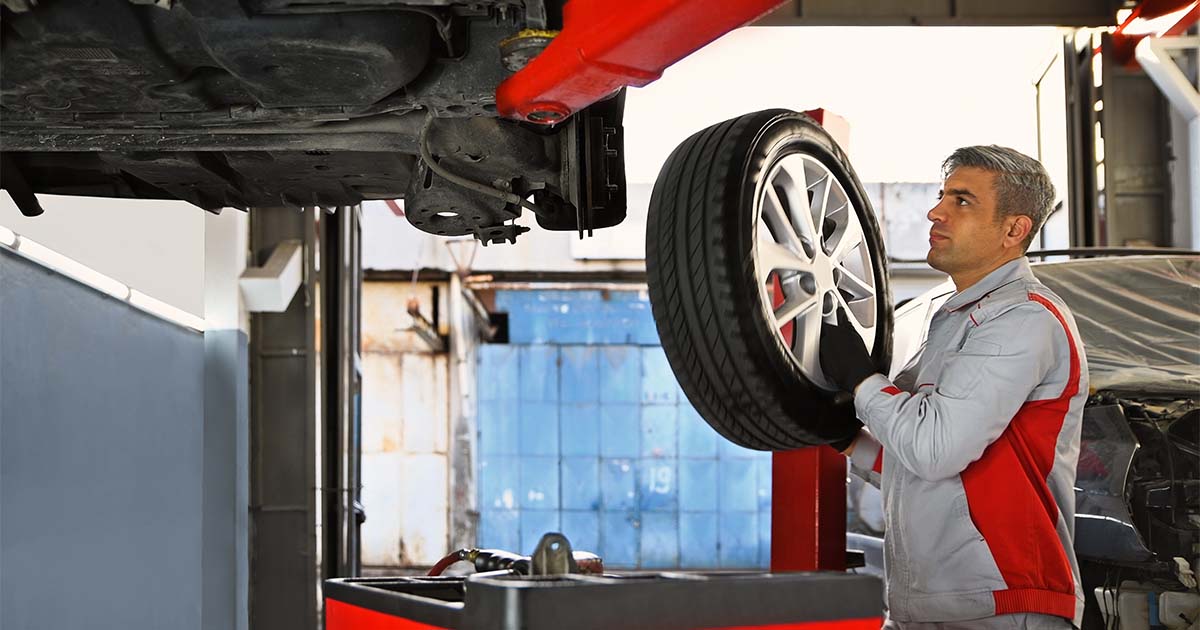How to Winterize Your Car

The change in seasons is a good time to get your car ready for winter.
When your car is winterized and equipped with snow tires, yoHow-to-Winterize-Your-Caru should be ready to confidently face snowy and ice conditions.
Winter tires are a safe bet
Switching to winter tires is one of the most important parts of winterizing your car.
When the temperature dips below freezing, the rubber in your tires will harden and they will lose their grip on the road. Adding ice and snow to that equation can mean an accident.
All season tires may be ok in some parts of Canada, but winter tires are your best bet, and you should switch to them when the temperature is around 7 degrees Celsius. In Canada, winter tires can be identified by the mountain and snowflake logo.
Tire pressure
When temperatures drop, the pressure in your tires decreases. Check the tire pressure regularly and keep it at the level recommended by your car’s manufacturer. Look on the driver’s side door jamb or in your vehicle's owner’s manual.
Car winter survival kit
A winter survival kit can save your life if you face an emergency in freezing temperatures.
You’ll need:
- A shovel
- A blanket
- Candle and matches
- Protein bars/dried food
- Bottles of water
- Extra warm clothing
- Bag of sand
- Jumper cables
- Flares
- Whistle and flashlight
Good visibility
Good visibility is an essential part of winterizing your vehicle. Do some basic maintenance in the fall to prevent driving with poor visibility.
- Replace your wipers if they are leaving streaks on your windshield or are stiff and cracked.
- Remove snow and ice with a brush instead of relying on your wipers because too much snow can overload your wiper motor.
- Keep your windshield washer fluid topped up and use fluid with antifreeze when it gets cold out.
- Make sure defrost mode on your windshield is working properly. Make sure that all of your car’s lights are working properly.
- Have an ice scraper and snow brush in your car
Give your car a tune-up for winter
Cold weather can make problems worse and cost you more money in the long run. Do some maintenance on your car before winter.
- Check your brakes. Make sure they are working properly before driving in icy conditions.
- Check hoses, belts, wires, cables, and spark plugs to avoid an unnecessary breakdown in the winter.
- Test your battery. Low temperatures and using more accessories like heat, windshield wipers, and defrosters put more strain on your battery. Test your battery and replace it if it does not hold a charge.
- Change your oil. Oil thickens when it gets colder, and some car manufacturers recommend certain types for winter conditions.
- Check the cooling system. Rubber parts can crack when it gets cold out so look for cracks and leaks on radiator and heater hoses and replace them if they are too soft or brittle. Flush the cooling system at least every two years and refill it with pre-mixed coolant or the right ration of anti-freeze and water as specified by the manufacturer.
- Stop locks from freezing. Lubricate your car’s locks with door-lock lubricant or silicone spray.
Keep your car clean inside and out
Protect your car’s finish from dirt and salt with a fresh coat of wax. Apply a coat of wax to alloy wheels to prevent corrosion and pitting. Protect the inside of your car by buying floormats if you do not have them already. Rubber all-weather mats are ideal for protecting your car’s carpets and floorboards.



